1.3E: Exercises
- Page ID
- 120102
\( \newcommand{\vecs}[1]{\overset { \scriptstyle \rightharpoonup} {\mathbf{#1}} } \)
\( \newcommand{\vecd}[1]{\overset{-\!-\!\rightharpoonup}{\vphantom{a}\smash {#1}}} \)
\( \newcommand{\id}{\mathrm{id}}\) \( \newcommand{\Span}{\mathrm{span}}\)
( \newcommand{\kernel}{\mathrm{null}\,}\) \( \newcommand{\range}{\mathrm{range}\,}\)
\( \newcommand{\RealPart}{\mathrm{Re}}\) \( \newcommand{\ImaginaryPart}{\mathrm{Im}}\)
\( \newcommand{\Argument}{\mathrm{Arg}}\) \( \newcommand{\norm}[1]{\| #1 \|}\)
\( \newcommand{\inner}[2]{\langle #1, #2 \rangle}\)
\( \newcommand{\Span}{\mathrm{span}}\)
\( \newcommand{\id}{\mathrm{id}}\)
\( \newcommand{\Span}{\mathrm{span}}\)
\( \newcommand{\kernel}{\mathrm{null}\,}\)
\( \newcommand{\range}{\mathrm{range}\,}\)
\( \newcommand{\RealPart}{\mathrm{Re}}\)
\( \newcommand{\ImaginaryPart}{\mathrm{Im}}\)
\( \newcommand{\Argument}{\mathrm{Arg}}\)
\( \newcommand{\norm}[1]{\| #1 \|}\)
\( \newcommand{\inner}[2]{\langle #1, #2 \rangle}\)
\( \newcommand{\Span}{\mathrm{span}}\) \( \newcommand{\AA}{\unicode[.8,0]{x212B}}\)
\( \newcommand{\vectorA}[1]{\vec{#1}} % arrow\)
\( \newcommand{\vectorAt}[1]{\vec{\text{#1}}} % arrow\)
\( \newcommand{\vectorB}[1]{\overset { \scriptstyle \rightharpoonup} {\mathbf{#1}} } \)
\( \newcommand{\vectorC}[1]{\textbf{#1}} \)
\( \newcommand{\vectorD}[1]{\overrightarrow{#1}} \)
\( \newcommand{\vectorDt}[1]{\overrightarrow{\text{#1}}} \)
\( \newcommand{\vectE}[1]{\overset{-\!-\!\rightharpoonup}{\vphantom{a}\smash{\mathbf {#1}}}} \)
\( \newcommand{\vecs}[1]{\overset { \scriptstyle \rightharpoonup} {\mathbf{#1}} } \)
\( \newcommand{\vecd}[1]{\overset{-\!-\!\rightharpoonup}{\vphantom{a}\smash {#1}}} \)
Exercises
In Exercises 1-12, determine whether or not the relation represents \(y\) as a function of \(x\). Find the domain and range of those relations which are functions.
- [MOM] {\((-3, 9)\), \(\;(-2, 4)\), \(\;(-1, 1)\), \(\;(0, 0)\), \(\;(1, 1)\), \(\;(2, 4)\), \(\;(3, 9)\}\)
- [MOM] \(\left\{ (-3,0), (1,6), (2, -3), (4,2), (-5,6), (4, -9), (6,2) \right\}\)
- \(\left\{ (-3,0), (-7,6), (5,5), (6,4), (4,9), (3,0) \right\}\)
- \(\left\{ (1,2), (4,4), (9,6), (16,8), (25,10), (36, 12), \ldots \right\}\)
- {(\(x, y) \, | \, x\) is an odd integer, and \(y\) is an even integer}
- {\((x, 1) \, | \, x\) is an irrational number}
- {\((1, 0)\), \(\;(2, 1)\), \(\;(4, 2)\), \(\;(8, 3)\), \(\;(16, 4)\), \(\;(32, 5), \;\) …}
- {\(\ldots, \; (-3, 9)\), \(\;(-2, 4)\), \(\;(-1, 1)\), \(\;(0, 0)\), \(\;(1, 1)\), \(\;(2, 4)\), \(\;(3, 9), \;\) …}
- \(\{ (-2, y) \, | \, -3 < y < 4\}\)
- \(\{ (x,3) \, | \, -2 \leq x < 4\}\)
- \(\ \left\{\left(x, x^{2}\right) \mid x \text { is a real number }\right\}\)
- \(\ \left\{\left(x^{2}, x\right) \mid x \text { is a real number }\right\}\)
In Exercises 13-32, determine whether or not the relation represents \(y\) as a function of \(x\). Find the domain and range of those relations which are functions.
- [MOM]

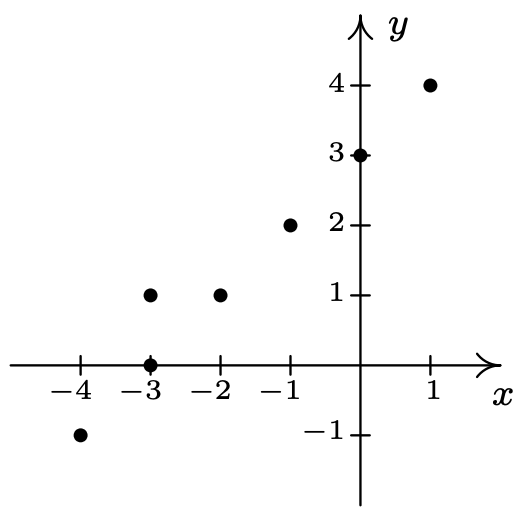
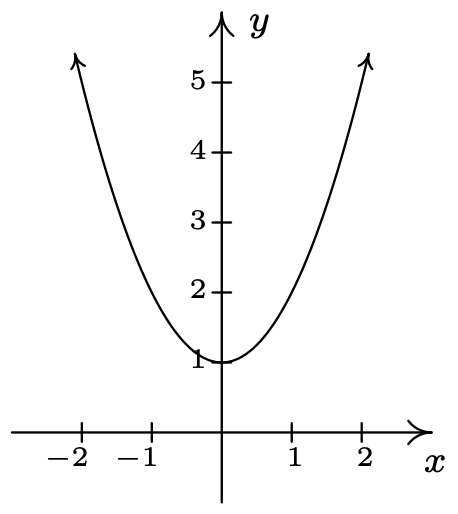
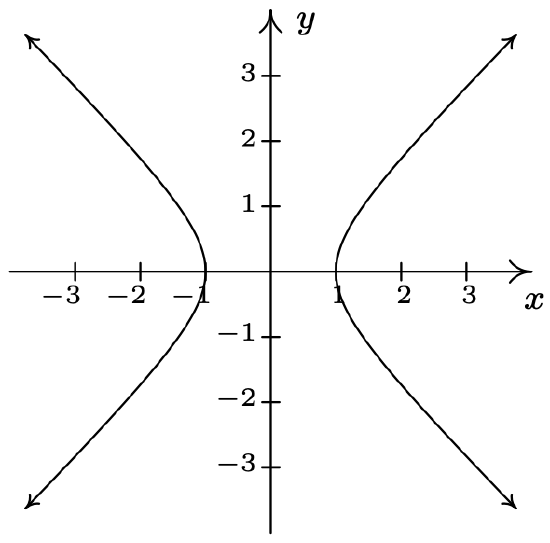
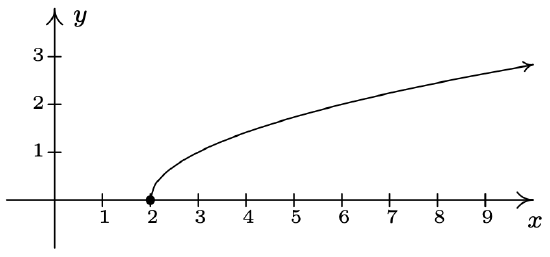
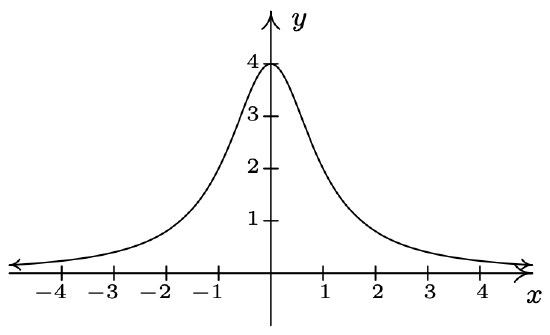
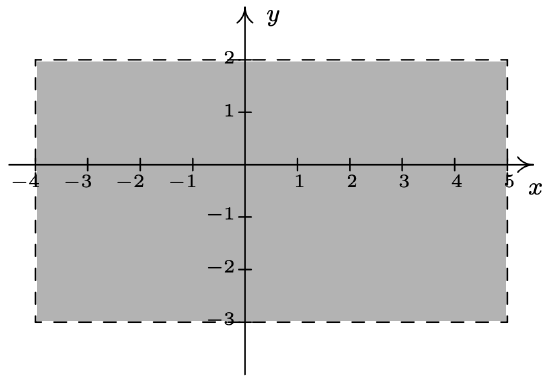
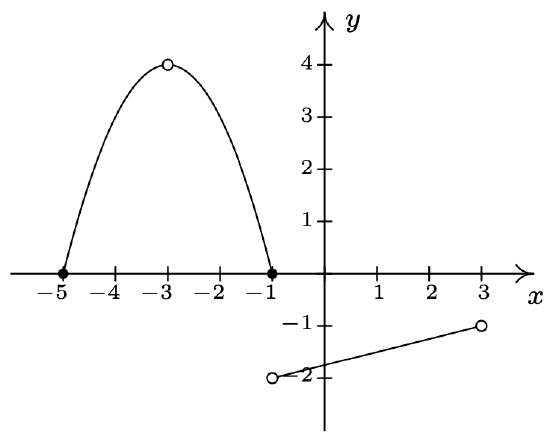
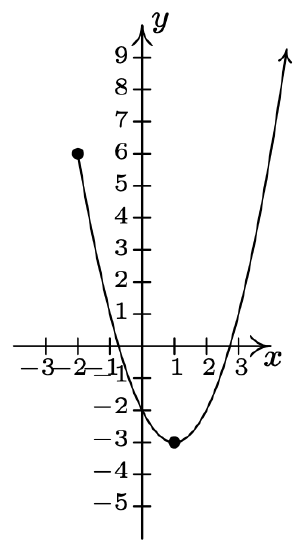
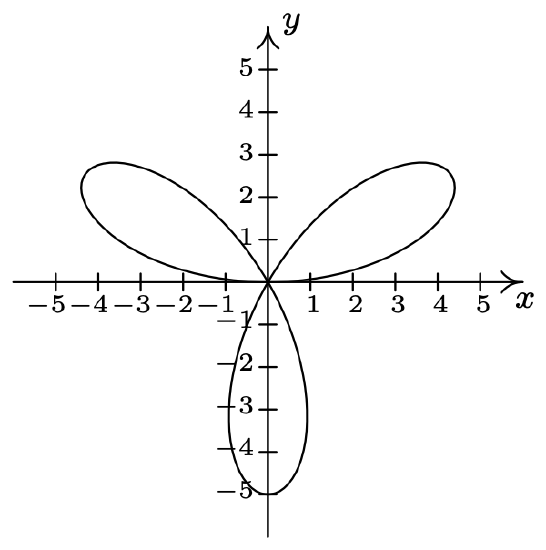
- [MOM]
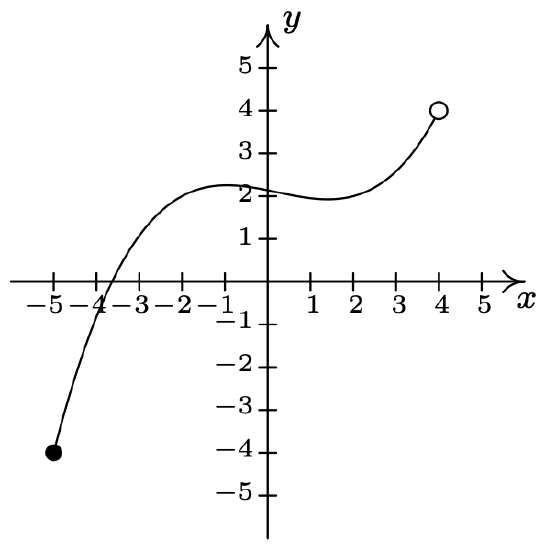
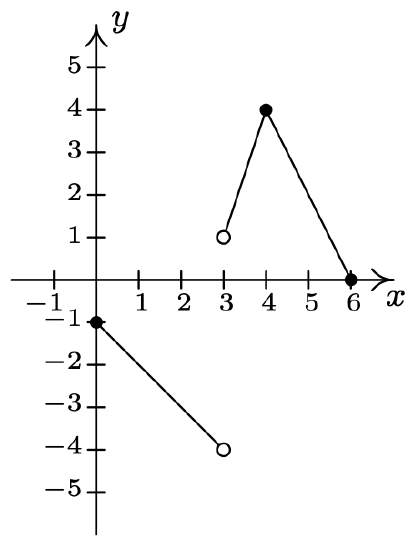
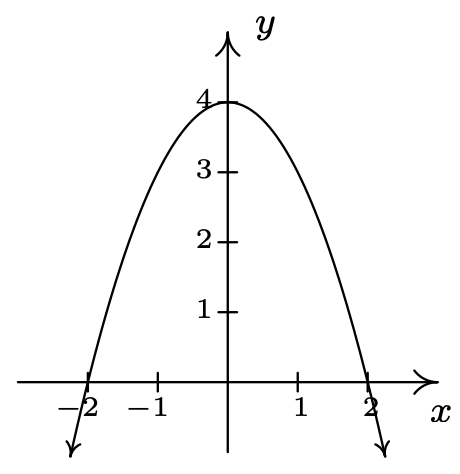
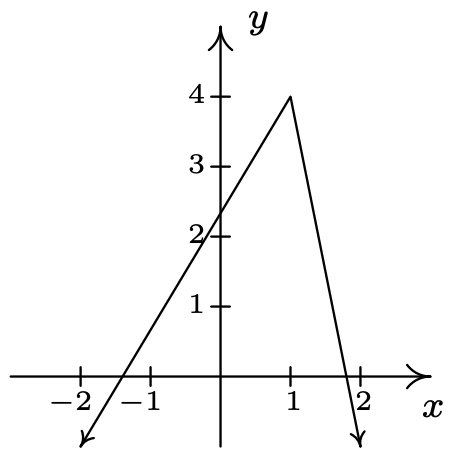
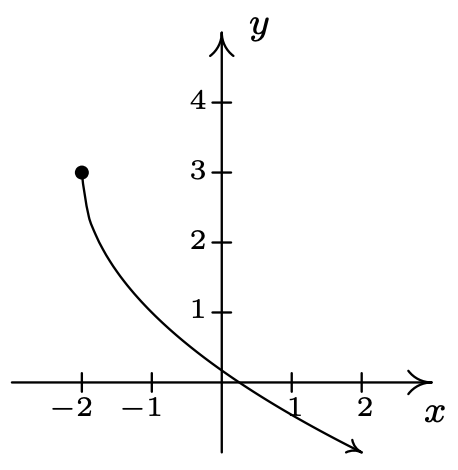
- [MOM]
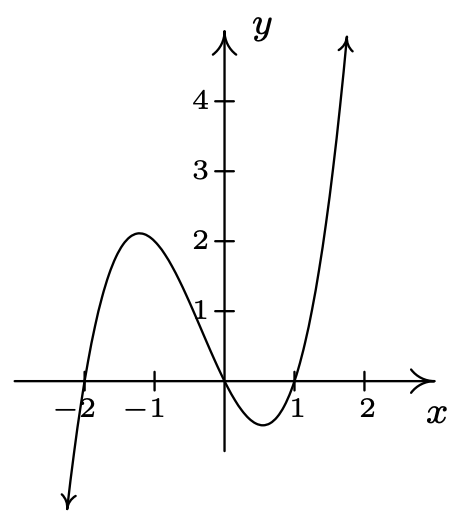
- [MOM]
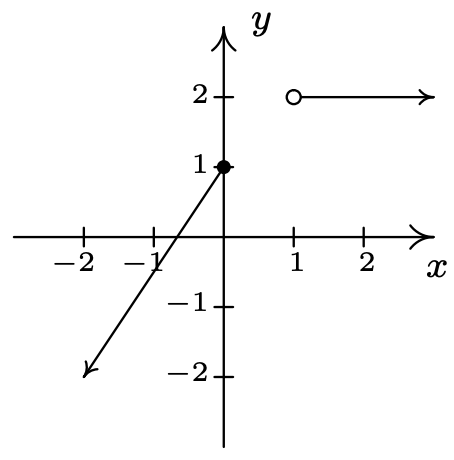
- [MOM]
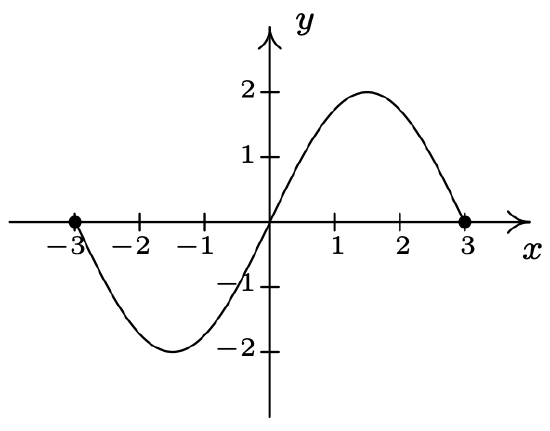
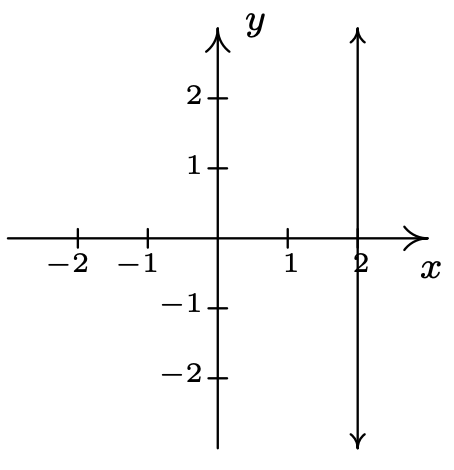
- [MOM]
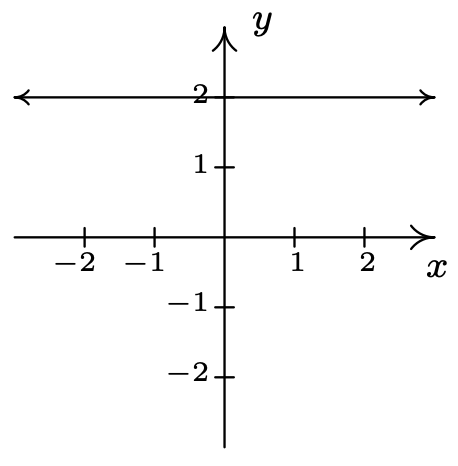
In Exercises 33-47, determine whether or not the equation represents \(y\) as a function of \(x\).
- \(y = x^{3} - x\)
- \(y = \sqrt{x - 2}\)
- \(x^{3}y = -4\)
- \(x^{2} - y^{2} = 1\)
- \(y = \dfrac{x}{x^{2} - 9}\)
- \(x = -6\)
- \(x = y^2 + 4\)
- \(y = x^2 + 4\)
- \(x^2 + y^2 = 4\)
- \(y = \sqrt{4-x^2}\)
- \(x^2 - y^2 = 4\)
- \(x^3 + y^3 = 4\)
- \(2x + 3y = 4\)
- \(2xy = 4\)
- \(x^2 = y^2\)
- Explain why the population \(P\) of Sasquatch in a given area is a function of time \(t\). What would be the range of this function?
- Explain why the relation between your classmates and their email addresses may not be a function. What about phone numbers and Social Security Numbers?
The process given in Section 1.3 for determining whether an equation of a relation represents \(y\) as a function of \(x\) breaks down if we cannot solve the equation for \(y\) in terms of \(x\). However, that does not prevent us from proving that an equation fails to represent \(y\) as a function of \(x\). What we really need is two points with the same \(x\)-coordinate and different \(y\)-coordinates which both satisfy the equation so that the graph of the relation would fail the Vertical Line Test. Discuss with your classmates how you might find such points for the relations given in Exercises 50-53.
- \(x^{3} + y^{3} - 3xy = 0\)
- \(x^{4} = x^{2} + y^{2}\)
- \(y^{2} = x^{3} + 3x^{2}\)
- \((x^{2} + y^{2})^{2} = x^{3} + y^{3}\)
Answers
-
Function
domain = \(\left\{ -7, -3, 3, 4, 5, 6 \right\}\)
range = \(\left\{ 0,4,5,6,9 \right\}\) -
Function
domain =\(\ \{1,4,9,16,25,36, \ldots\}
=\{x \mid x \text { is a perfect square }\}\)
range=\(\ \{2,4,6,8,10,12, \ldots\}
=\{y \mid y \text { is a positive even integer }\}\) - Not a function
-
Function
domain=\(\ \{x \mid x \text { is irrational }\}\)
range = {\(1\)} -
Function
domain = \(\ \left\{x \mid x=2^{n} \text { for some whole number } n\right\}\)
range = \(\ \{y \mid y \text { is any whole number }\}\) -
Function
domain = \(\ \{x \mid x \text { is any integer }\}\)
range = \(\ \left\{y \mid y=n^{2} \text { for some integer } n\right\}\) - Not a function
-
Function
domain = \([-2, 4)\), range = {\(3\)} -
Function
domain = \((-\infty, \infty)\)
range = \([0,\infty)\) - Not a function
-
Not a function
-
Function
domain = \((-\infty, \infty)\)
range = \([1, \infty)\) - Not a function
-
Function
domain = \([2, \infty)\)
range = \([0, \infty)\) -
Function
domain = \((-\infty, \infty)\)
range = \((0, 4]\) - Not a function
-
Function
domain = \([-5,-3) \cup(-3, 3)\)
range = \((-2, -1) \cup [0, 4)\) -
Function
domain = \([-2, \infty)\)
range = \([-3, \infty)\) - Not a function
-
Function
domain = \([0,3) \cup (3,6]\)
range = \((-4,-1] \cup [0,4]\) -
Function
domain = \((-\infty, \infty)\)
range = \((-\infty, 4]\) -
Function
domain = \((-\infty, \infty)\)
range = \((-\infty, 4]\) -
Function
domain = \([-2, \infty)\)
range = \((-\infty, 3]\)
- Not a function
- Function
- Function
- Function
- Not a function
- Function
- Not a function
- Not a function
- Function
- Not a function
- Function
- Not a function
- Function
- Function
- Function
- Not a function

